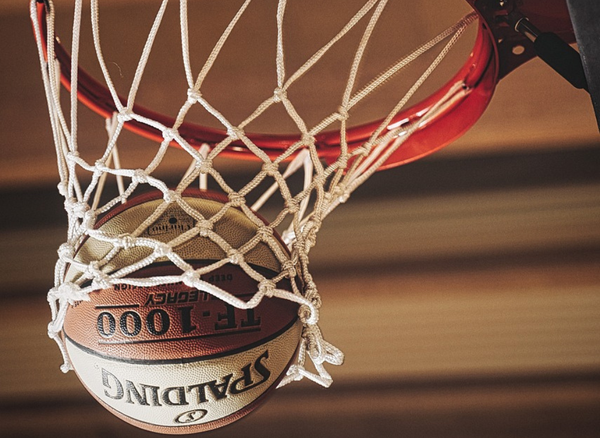Basketball is a game of strategy, skill, and sometimes, a little bit of showmanship. One of the most intriguing strategies is the isolation play, where a single player takes center stage, much like a rock star at a concert. But what are isolation basketball plays, and why do they matter? Let's dribble through this.
What Are Isolation Basketball Plays?
Isolation basketball plays, often referred to as "iso plays," are the bread and butter for many NBA stars. Imagine a lone cowboy in a Western movie, facing off against a band of outlaws. That's essentially what happens on the court when a player is isolated. The ball handler, often a point guard or a scoring machine like Kobe Bryant or Kevin Durant, is given the room to operate one-on-one against a defender. The goal? To create scoring opportunities by beating the defender with skillful dribbles and sharp shooting.
The beauty of isolation plays lies in their simplicity. The ball handler, often positioned near the three-point line, uses their skills to either shoot, pass, or drive to the basket. It's a high-risk, high-reward strategy that can leave defenders with dead legs and teams with a crucial basket. When executed well, it’s like watching a maestro conduct an orchestra, with the court as their stage.
Why Use Isolation Plays?
Isolation plays are not just about showcasing individual talent; they are a strategic weapon in a coach's arsenal. When executed, they can dismantle even the most robust defenses. Picture a chess game where the queen is unleashed to wreak havoc on the opponent's pieces. That's the power of a well-executed iso play.
They allow the best player to take control, reducing the chances of turnovers and miscommunication. It's like handing the keys to a Ferrari to a seasoned driver and saying, "Floor it!" The result? A thrilling drive to the hoop or a buzzer-beating shot that leaves fans on the edge of their seats.
Famous Isolation Players
When you think of isolation basketball, names like Michael Jordan, Allen Iverson, Kyrie Irving, and Stephen Curry come to mind. These players have turned iso plays into an art form, using their dribbling skills and shooting prowess to leave defenders in the dust. James Harden, with his signature step-back three, has made isolation plays a staple of his game, often drawing defenders out of position and creating open shots.
Kevin Durant, with his height and shooting ability, is another master of isolation. His ability to shoot over defenders makes him a nightmare to guard. Similarly, Carmelo Anthony's post-up game and mid-range shots have made him a formidable force in isolation situations. These players have shown that isolation basketball is not just about scoring but also about creating opportunities for teammates.
The Risks of Isolation Plays
While isolation plays can be spectacular, they come with their own set of challenges. Relying too heavily on one player can make a team predictable, like a magician who only knows one trick. Defenses can adjust, sending double teams or forcing the player into difficult shots. It's a delicate balance between showcasing individual brilliance and maintaining team cohesion.
Moreover, isolation plays can lead to stagnation on offense. When one player dominates the ball, others may become spectators, leading to a lack of rhythm and flow. It's like a band where only the lead guitarist gets to solo, leaving the rest of the group feeling left out. Coaches must ensure that isolation plays are used judiciously, blending them with other strategies to keep the defense guessing.
The Role of Coaches and Teams
Coaches play a crucial role in designing isolation plays. They must identify the right moments to isolate a player and ensure that the team is ready to support the isolated player. This involves setting screens, spacing the floor, and being ready to pass or shoot if the play breaks down. Teams like the Golden State Warriors have mastered the art of using isolation plays within their offense, blending them seamlessly with ball movement and screens.
Isolation plays can be a double-edged sword. While they can lead to spectacular plays and highlight-reel moments, they can also disrupt the flow of the game if overused. Coaches must strike a balance, ensuring that isolation plays complement the team's overall strategy rather than dominate it.
Isolation Basketball Plays FAQ
What is the main goal of isolation basketball plays?
The main goal is to create one-on-one scoring opportunities by isolating a skilled player against a defender, allowing them to use their dribbling and shooting skills to score.
Which players are known for their isolation play skills?
Players like Kobe Bryant, Kevin Durant, James Harden, Carmelo Anthony, and Kyrie Irving are renowned for their ability to excel in isolation situations.
How do coaches incorporate isolation plays into their team's strategy?
Coaches design isolation plays to complement the team's overall strategy, using them at strategic moments to maximize scoring opportunities while maintaining the flow of the game.
Are isolation plays suitable for all players?
Not necessarily. Isolation plays are best suited for players with strong one-on-one skills, such as excellent dribbling, shooting, or the ability to drive to the basket.
How do coaches decide when to use isolation plays?
Coaches typically use isolation plays when they want to exploit a mismatch or when the team needs a quick score, especially in late-game situations.
Can isolation plays be used in youth basketball?
While they can be used, it's important to focus on team play and development at the youth level. Isolation plays should be used sparingly to ensure all players are involved and learning.
Summary
Isolation basketball plays are a thrilling aspect of the game, offering players the chance to showcase their skills and create scoring opportunities. While they can be risky, the excitement and potential rewards make them a favorite among fans and players alike. With the right player, isolation plays can be a powerful tool in any team's offense.









